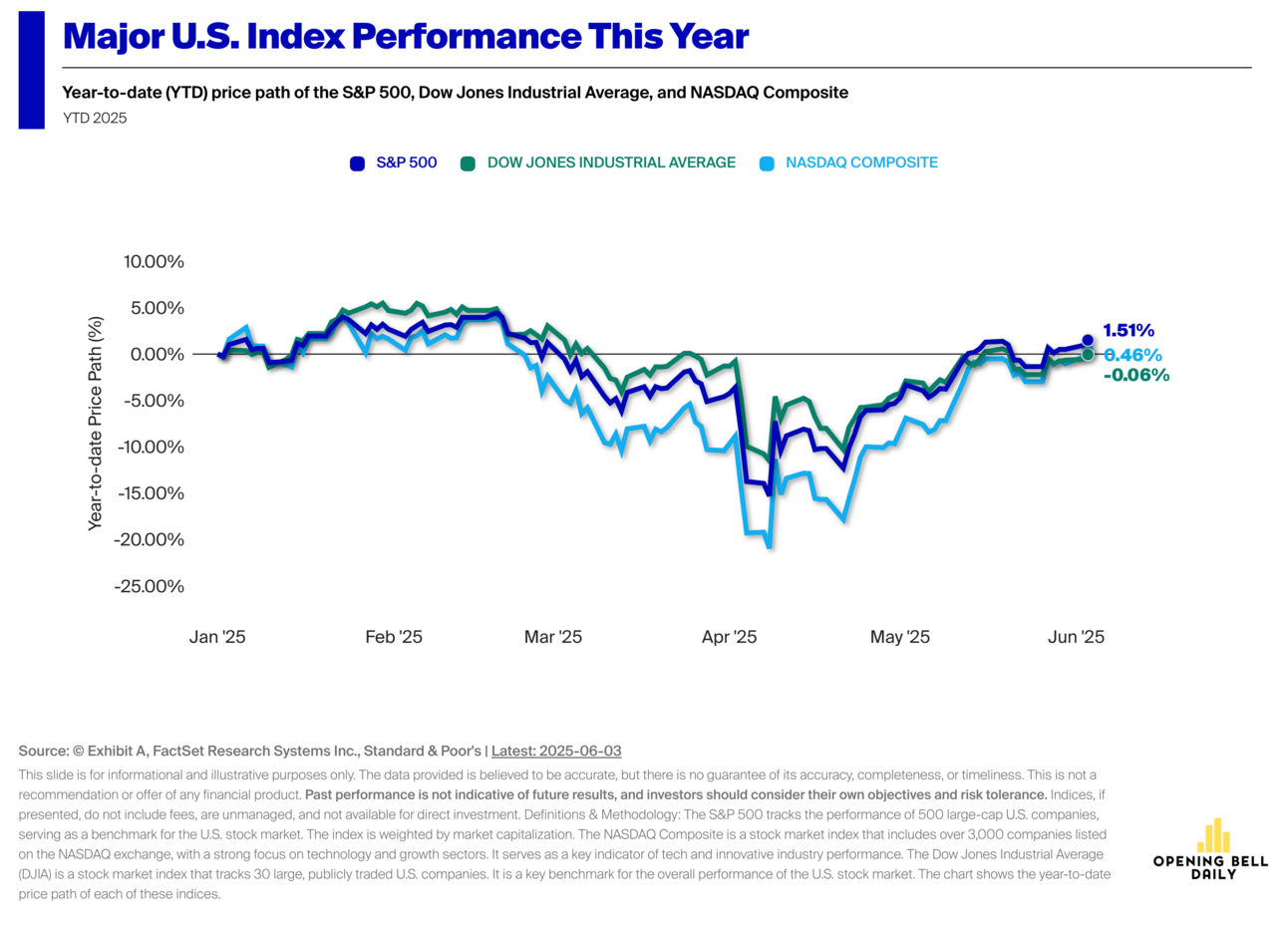It’s Friday eve! We’ve taken in a slate of jobs data already this week and the big government report comes due tomorrow. This morning we decipher the labor market tea leaves and the dicey outlook for interest rates.
Today’s letter is brought to you by Public!
Our partners at Public.com just released a powerful new AI tool that lets you build a unique and specific index, and it’s only limited by your own creativity.
It’s called Generated Assets.
I used the tool to create an asset that includes 19 overlooked companies across four sectors that are integrating AI. Historical data shows this index would have compounded at 28% annually over the last decade.
Jobs disconnect
Mixed signals from the labor market haven’t derailed the stock market’s ascent, and it isn’t yet clear whether investors or the jobs data will buckle first.
On Wednesday, ADP reported that the pace of hiring in the private sector dropped to 37,000 in May, far below the expected 130,000 and the lowest level since March 2023. The weak print gave President Trump ammo for his latest jab at the Fed Chairman.
“ADP NUMBER OUT!!! ‘Too Late’ Powell must now LOWER THE RATE,” he wrote on Truth Social. “He is unbelievable!!!”
Politics aside, recent history has illustrated that the ADP figures aren’t exactly gospel.
Month after month, they have diverged from the Labor Department’s more resilient payroll numbers, often undershooting by landslide margins.

The ADP data has been mostly weaker than the BLS numbers over the last year (Source: Barron’s)
That disconnect is why Powell & Co. have looked to broader indicators to assess the health of the labor market.
According to JOLTS data released earlier this week, the ratio of job openings to unemployed workers held steady at 1.0x in April, above its long-term average of 0.7x.
That points to a relatively balanced supply and demand for workers.
“Job openings as a percentage of the workforce are also currently higher than at any point back to 2000 pre-pandemic, except for the end of the 2010s during a very strong labor market,” wrote DataTrek Research co-founders Nicholas Colas and Jessica Rabe in a note Wednesday.
“Needless to say, this data does not reflect a weak labor market relative to history, nor does it portend a US recession.”

Chart courtesy of Exhibit A
Meanwhile, layoffs remain low and employers are still hiring at a pace above what’s seen during a recession.
“That’s good news for US equity investors, as a healthy labor market will continue to support corporate profitability,” said Colas and Rabe.

Chart courtesy of Exhibit A
The labor market’s resilience helps explain why markets have fallen in line with the central bank’s projection for two rate cuts this year.
Traders, it seems, don’t think the president’s call for rate cuts will convince the Fed to rush on monetary policy.

Chart courtesy of Exhibit A
That said, a softer jobs report from the Bureau of Labor Statistics on Friday could be enough to nudge Powell into action.
But if the official numbers echo the trend of quiet strength, it could force investors to reconsider just how close we really are to a policy pivot.
Market snapshot

Elsewhere
🪙 JPMorgan will accept crypto as loan collateral. The bank will begin taking shares of BlackRock’s iShares Bitcoin Trust (IBIT) ETF as collateral for loans, and will consider some clients’ crypto holdings when calculating net worth and liquid assets. (CoinDesk)
🏦 Fed’s ‘Beige Book’ sees signs of a slowdown. The report described prices rising at a moderate pace, hiring slowing down, and businesses concerns rising over tariffs. Regionally, New York, boston, and Philadelphia all reported weakening economic activity. (CNBC)
🍻 Want more financial news, but after the closing bell? Thousands of readers trust Brew Markets for their end-of-day analysis. I’ll handle your morning dispatch, and you can wrap up your afternoons with Brew Markets from Morning Brew — sign up free.
Rapid-fire
President Trump says he spoke to Russia’s Putin, predicts no immediate peace deal with Ukraine (CNBC)
Bernie Madoff’s Ponzi victims will recoup $498 million in a new settlement, boosting total recovery to $15.6 billion (Reuters)
Spotify stock closed at a record high Wednesday after JPMorgan raised its price target (WSJ)
Gold miner stocks underperformed gold for a long time but that has recently flipped (MoneyShow)
Amazon will invest $10 billion in North Carolina to expand AI infrastructure (Reuters)
Government debt will never stop growing, but that’s a tailwind for bitcoin (Pomp Letter)
What I learned during an invite-only media dinner hosted by Andreessen Horowitz (Blog)
Wedbush’s Dan Ives launched an AI-focused ETF that tracks 30 stocks on his research list (Investopedia)
A 20% compounder for years to come
We asked a $2.2 billion portfolio manager for his highest-conviction stock pick right now. He told Best Ideas Club members that he’s piling into a misunderstood defense business that’s leaning into AI.
Last thing
About me
📰 I’m Phil Rosen, co-founder and editor-in-chief of Opening Bell Daily. I’ve published books, lived on three continents, and won awards for my journalism, which has appeared in Business Insider, Fortune, Yahoo Finance, Bloomberg and Inc. Magazine.
I write our flagship newsletter to prepare you for each trading day — unpacking markets, economic data and Wall Street with analysis you won’t find anywhere else.
Feedback? Reply to this email, ping me on X @philrosenn, or write me directly at [email protected].


